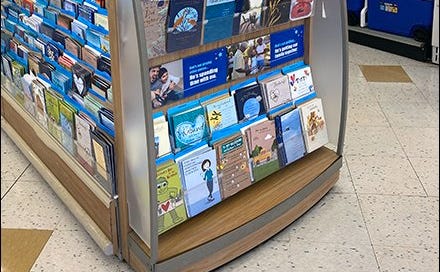It’s not like Father’s Day was ever a huge holiday in our family. To be honest, I can’t remember any one specific Father’s Day. But after my dad died when I was 18, I’d find myself dreading June. I worked part-time at Walgreens, and right after the Mother’s Day mayhem, the Hallmark aisle would quickly switch from pink to blue. Cards with hammers, beers, and golf clubs replaced those with flowers, margaritas, and beach umbrellas. The aisle made me so fucking sad. Furiously so.
It’s not like buying a Father’s Day card was a huge deal, but when I couldn’t buy one, suddenly it meant everything. Father’s Day quickly became a symbol of everything I had lost—not just a loving, irreplaceable person in my life, but all their things, too.
There’s tons of articles out there about how to sort through a loved one’s things, but reading them didn’t ease the reality of the situation. What do you keep? What do you donate? What can you not bear to think about?
In the beginning, I was a hoarder. The big things: cellphone, clothes, jewelry, tools. But I also became mildly obsessive about the obscure: a disposable razor, a pillow sheet, a pencil. Maybe if I kept all of my father’s things, it’d feel like he never left. Obviously, that wasn’t true. During the first week after his death, I’d lie down on his side of my parents’ bed, his smell still lingering on the sheets. But then one day it wasn’t. Just gone.
I cried and cried and cried. Sobbed.
Over the years, my dad’s things disappeared by donation or purposeful disregard. Some things were easy to get rid of—tube socks with holes in them, tools that were years beyond use. But some things—like his favorite pair of yellow swim shorts—were too hard to imagine giving up, but equally disturbing to think of keeping them without his body to inhabit. So these things were kept in unopened drawers or stuffed into the backs of closets or shoved into the corner of the shed so that we wouldn’t have to deal with them, let alone look at them.
Father’s Day, as a result, has become another hump to trek over every year, much like my dad’s birthday or his death anniversary. For much of the day, I feel like I’m fine, but then I see the thing—a screwdriver, a greased T-shirt, a Chevy van—and I feel like I’m back at square one.
Yesterday was my 18th Father’s Day without my dad so the feeling of being back at square one lasted about an hour, maybe two. My grief wound isn’t hemorrhaging anymore. For the most part, it’s scabbed over.
But here’s the part that’s harder to explain: sometimes, I like to pick the scab. Like to scratch it over and over again until it bleeds.
In other words, sometimes I like to stay in that square one space. Instead of actively trying to get myself out of it, I’ll go through old photos, videos. I’ll stare at the thing that triggered me in the first place. Won’t let it go. Because sometimes it feels good to feel that level of sadness—feels good to remember. It’s a reminder that my dad may be dead, but not in my mind, not in my body. If only I’m brave enough to go there, his memory is there waiting for me.
Coming Up:
As a reminder, if you’re interested in learning about memoir and want to learn what it’s all about, please consider jumping into my 3-hour seminar! In it, we’ll talk all things memoir: the elements of the genre, how to get started, and how to keep writing your story even when it seems impossible. You’ll leave the session with lots to chew on, and most importantly, good writing! Sign up now!






